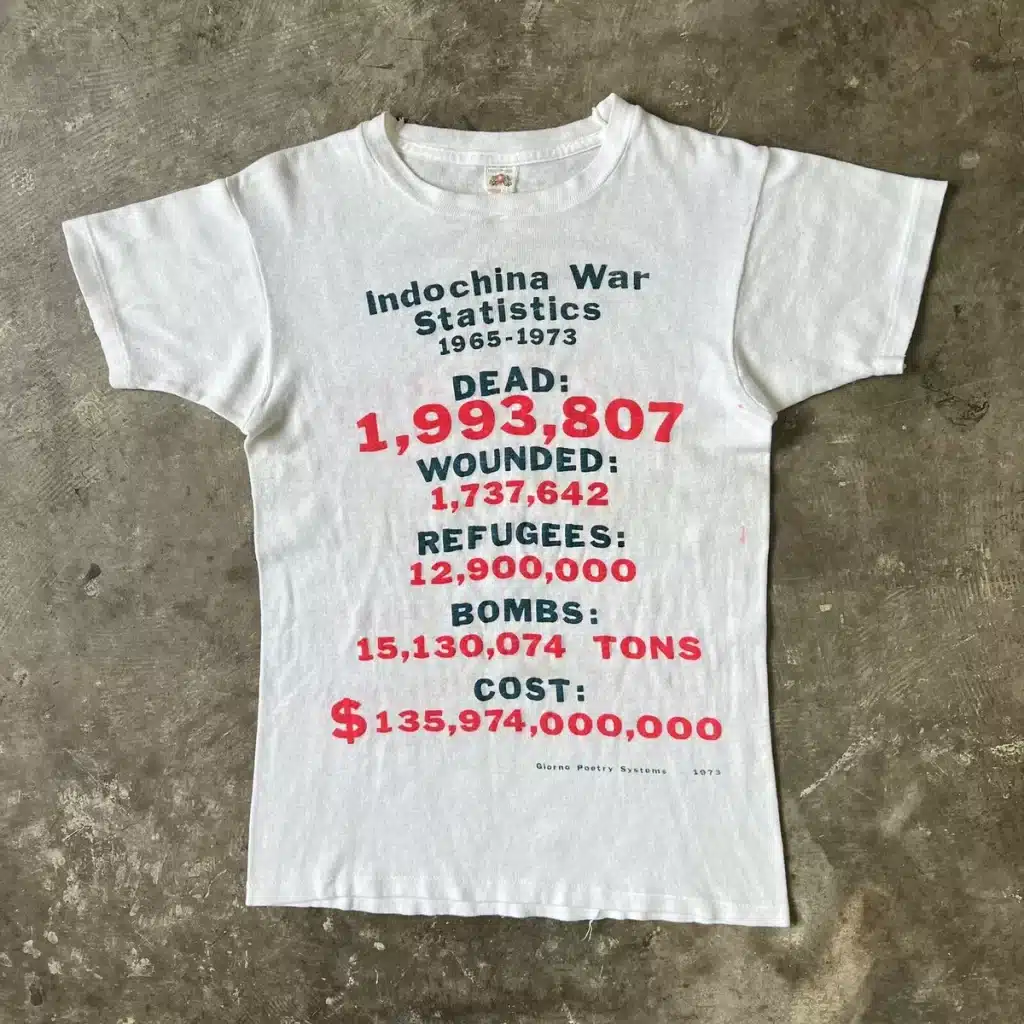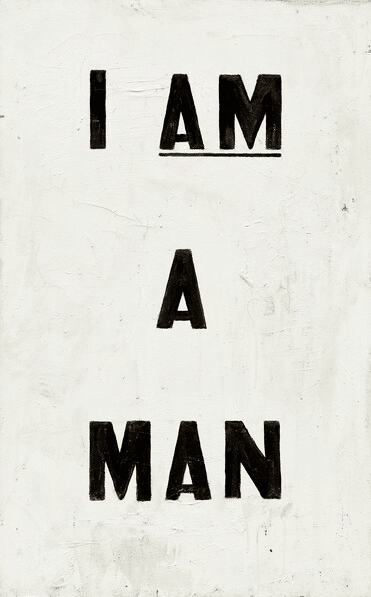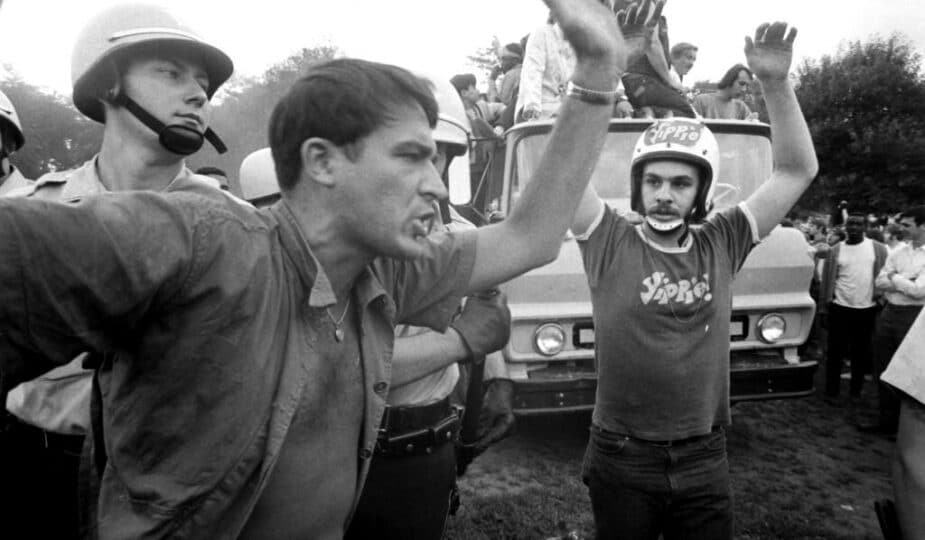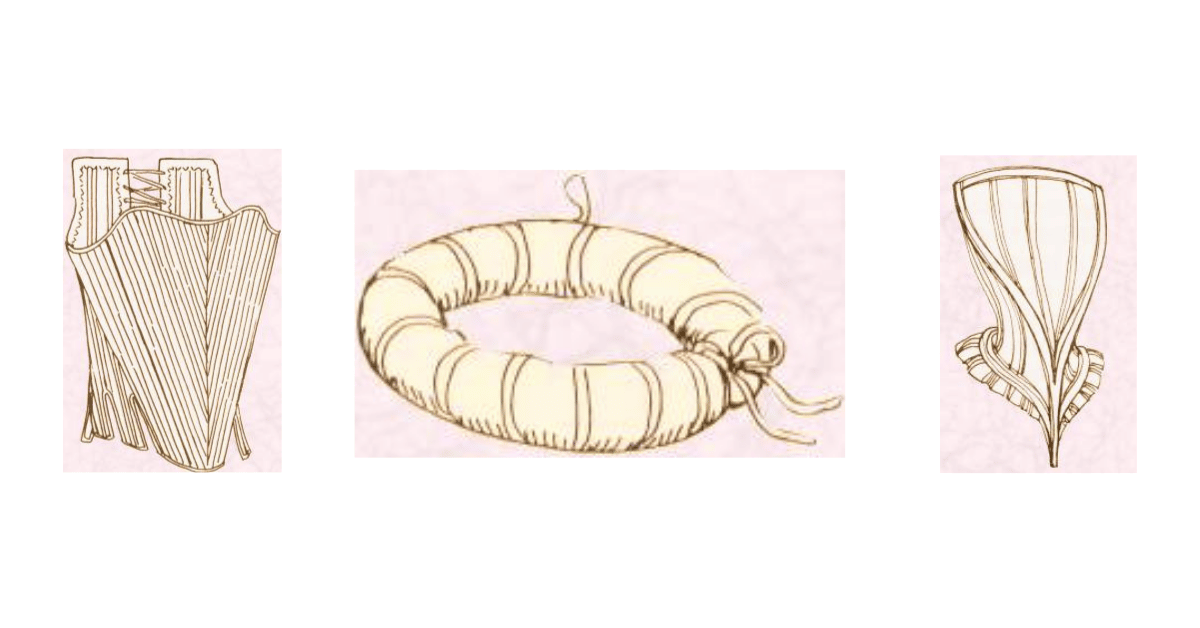Chloe Montgo from Fashion-era.com
In the tapestry of modern social movements, the humble t-shirt occupies a uniquely powerful place. More than just a piece of clothing, T-shirts have become canvases of expression, carrying messages of protest, solidarity, and change across the globe. Their role in political and social activism offers a fascinating glimpse into how fashion intersects with societal shifts and movements.
A Brief History
The journey of the T-shirt from a humble undergarment to a vibrant tool of expression is a fascinating story of cultural evolution, one that mirrors the progression of modern social movements. This transformation is notably attributed to the dynamic era of the 1960s, a decade marked by a surge of activism, from civil rights campaigns to anti-war protests. During this tumultuous period, the T-shirt began to emerge as a potent medium for political and social commentary, a change significantly driven by technological advancements, especially in screen printing.
Screen printing technology, which became more accessible and affordable in the 1960s, allowed for the mass production of customized t-shirts. This development opened up new avenues for individuals and movements to express their ideologies and dissent. For the first time, slogans, logos, and graphic designs could be easily and quickly transferred onto t-shirts, making them powerful tools for communication. This ease of production, coupled with the t-shirt’s everyday presence, turned it into an ideal vehicle for broadcasting messages to a wide audience.
The period's spirit, characterized by a collective yearning for change, found a visual outlet through these personalized garments.
T-shirts adorned with slogans and designs became billboards for free speech, moving with the wearer, taking the message into streets, campuses, and public spaces.
They bore witness to the zeitgeist of resistance, peace, and liberation, encapsulating the mood of the era.
Whether it was advocating for civil rights, protesting against the Vietnam War, or supporting feminist movements, t-shirts became synonymous with the fight for justice and equality.

Moreover, this evolution of the t-shirt as a tool of expression was not just about visibility; it was about creating a sense of identity and community among those fighting for a common cause. Wearing a t-shirt with a political message or symbol didn't just proclaim one's stance; it signified belonging to a larger movement, a shared commitment to change. It transformed the wearer into a walking advocate for their beliefs, a personal endorsement of the message emblazoned across their chest.
The legacy of the t-shirt as a medium for social commentary has only grown stronger with time. It set the stage for the garment to be a universal symbol of protest and advocacy, a tradition that continues in today’s movements for social justice and change. The t-shirt’s evolution from an undergarment to a tool of expression is a testament to its power in amplifying voices and uniting people, a cloth woven with the threads of history, resistance, and liberation.
Symbolism and Solidarity
In the landscape of social movements, t-shirts transcend their material form to become emblematic banners of unity and collective identity. These garments serve as a canvas for expression, enabling individuals to visually communicate their support for a cause or movement without uttering a single word.
This phenomenon of silent solidarity through apparel has profound implications for the cohesion and morale of social movements. It allows participants to embody their beliefs physically, creating a powerful communal visual that can inspire, mobilize, and strengthen the resolve of those involved.
The symbolic weight of t-shirts in social movements is significant. They are not merely items of clothing but badges of honor and defiance. They signal an individual's commitment to a cause, making a personal statement that aligns with the collective ethos of a movement. This unspoken solidarity is immensely powerful, fostering a sense of belonging among participants.
When a group of individuals dons the same message on their attire, it visually amplifies the movement's core message, making it more visible and accessible to the broader public. This collective display can draw in bystanders, pique curiosity, and encourage dialogue, broadening the movement's reach and impact.

The case of the "I Am a Man" t-shirts from the 1968 Memphis Sanitation Strike is a poignant example of how a simple garment can encapsulate and project the essence of a social movement.
These t-shirts were more than just articles of clothing; they were declarations of humanity and demands for respect and equality.
In the context of the civil rights movement, where African American sanitation workers were fighting not only for better wages and working conditions but also for dignity in the face of systemic racism, these t-shirts unified the strikers.
They served as a rallying cry that resonated beyond the specifics of their labor dispute, touching on the universal desire for recognition of one's inherent worth.
This visual unity had a multiplicative effect, strengthening the morale of the movement by reminding participants of their common goals and shared struggles. It also made the movement's message accessible and relatable to the wider public, bridging gaps in understanding and empathy. The visual impact of seeing a mass of individuals unified under a single, powerful message can shift perceptions, challenge prejudices, and galvanize support from beyond the immediate community.
Furthermore, the legacy of such iconic t-shirts extends beyond the lifespan of the movements they represent. They continue to inspire future generations, serving as historical artifacts that carry the stories and struggles of those who came before. As such, t-shirts in social movements are not just momentary symbols of protest; they are lasting emblems of change, capturing the spirit of resistance and the enduring quest for justice.
The role of t-shirts in social movements underscores the interconnectedness of personal identity and collective action. By donning a t-shirt associated with a cause, individuals not only express their personal beliefs and affiliations but also contribute to a larger narrative of change. This confluence of personal expression and collective identity through the medium of t-shirts is a testament to the enduring power of visual symbolism in the pursuit of social justice and equality.
Accessibility and Visibility
The accessibility of t-shirts as vehicles for conveying messages is unparalleled in the realm of personal and political expression. Their low cost of production and ease of distribution democratize the ability to share a viewpoint or support a cause, making them an exceptionally potent tool in the arsenal of grassroots activism. This simplicity in manufacturing and dissemination allows for rapid response to current events, enabling individuals and organizations to quickly mobilize and express solidarity or dissent.
T-shirts' affordability is crucial; it ensures that participating in a movement is not limited by economic barriers. Almost anyone can afford a t-shirt, and the process of screen printing or even hand-painting designs allows for a high degree of customization at minimal expense. This economic accessibility broadens the base of potential participants in a movement, fostering a more inclusive atmosphere where voices from diverse socioeconomic backgrounds can be heard.
Distribution plays a key role in the effectiveness of t-shirts as tools of expression. They can be easily handed out at events, sold online, or even mailed, enabling movements to extend their reach beyond geographic limitations. This ease of distribution is instrumental in building a unified front across different regions and communities, amplifying the message and the movement’s visibility on a national or even global scale.
The visibility of t-shirts in various settings — from large-scale protests to daily life — is a key factor in their effectiveness. A person wearing a t-shirt with a poignant message serves as a mobile billboard, bringing the message into public spaces and everyday encounters. This visibility is not passive; it actively engages the public, inviting onlookers to read, interpret, and react to the message. In places where open dialogue about certain issues might be suppressed or ignored, a t-shirt can serve as a silent yet powerful form of protest and expression.
Moreover, the impact of seeing a message in a human context — worn by an individual — adds a personal dimension to political or social statements, making them more relatable and impactful. This personal aspect can break down barriers, making abstract or distant issues feel more immediate and pressing. As these messages become part of the social fabric, they can stimulate conversations among friends, family, and even strangers. This discourse is the first step in raising awareness and educating the public about specific causes or injustices.
The ability of t-shirts to sway public opinion should not be underestimated. In an era where media is fragmented and trust in traditional news sources is waning, personal testimonials and grassroots campaigns can play a pivotal role in shaping perspectives. T-shirts, as part of such campaigns, contribute to a groundswell of support that can shift societal attitudes and influence policy decisions. They are a testament to the power of collective action and visual communication, demonstrating how fashion can transcend aesthetic purposes to become a catalyst for social change.
In essence, the accessibility and visibility of t-shirts make them a uniquely effective medium for spreading messages. They embody the principles of democratic expression, allowing for widespread participation and engagement in social movements. Through their simple yet profound ability to convey messages, t-shirts continue to play a vital role in the ongoing dialogue around societal issues, serving as a reminder of the power of individual and collective voices in shaping the world.
Digital Age Amplification
Beyond the ability to make your own clothing, the rise of social media and digital platforms in recent years has significantly magnified the influence of t-shirts as tools of expression within social movements. This phenomenon has its roots in the simplicity and accessibility of t-shirts as a medium for conveying messages. When protestors don t-shirts emblazoned with powerful slogans or symbolic imagery, they transform these garments into canvases of protest.
As images of these protestors circulate online, the visual impact of their messages can resonate on a global scale, breaking through the noise of digital content to capture the attention of international audiences.

This global visibility is not merely about the spread of an image; it's about the proliferation of an idea. Social media platforms, with their capacity to share content instantly across continents, have enabled these t-shirts to become more than just articles of clothing.
They are now symbols of unity, resistance, and solidarity. Viral campaigns often emerge in tandem with these images, inviting people from all corners of the world to wear similar t-shirts. This act of wearing the same symbol or message creates a tangible sense of unity among supporters, regardless of their physical location.
Moreover, the sale of these t-shirts can often support the movements directly, either by raising awareness or by providing a financial backbone for activism efforts. Online platforms facilitate this by offering global marketplaces for these garments, turning support into a wearable and shareable form. As a result, the t-shirt becomes a powerful tool in the arsenal of social movements, capable of engaging supporters, generating funds, and creating a visually unified global community.
The effectiveness of t-shirts in social movements, amplified by digital platforms, underscores a broader shift in how social activism is conducted in the digital age. It reveals how traditional forms of protest and expression have evolved to harness the power of technology, enabling messages to travel further and faster than ever before. This evolution speaks to the innovative ways in which communities mobilize, advocate for change, and express solidarity in an increasingly interconnected world.
Contemporary Movements

In the landscape of modern activism, t-shirts have emerged as potent symbols of change, serving as both personal declarations and collective rallying cries. Their ubiquity and accessibility have cemented their status as a primary vehicle for expressing support for various causes, from the fight against racial injustice to the urgent calls for action on climate change.
The simplicity of a t-shirt, combined with the power of the messages it can carry, such as "Black Lives Matter" or appeals to combat climate change, enables these garments to distill complex issues into accessible and immediate forms of expression.
The effectiveness of t-shirts in these movements lies in their ability to encapsulate the essence of grassroots activism. They democratize participation, allowing anyone, regardless of their level of involvement or understanding of the issue, to make a visible and vocal contribution to the cause.
By donning a t-shirt with a specific message, individuals can instantly align themselves with a movement, signaling their support to others and fostering a sense of community and solidarity among like-minded individuals. This visibility is crucial in public spaces, where the collective display of these messages can create powerful visual statements that are hard to ignore.
Furthermore, t-shirts serve as a bridge between digital activism and physical presence. In an era where hashtags and online campaigns play a significant role in mobilizing support, the tangible nature of a t-shirt anchors these digital expressions in the real world. They carry the messages from the screens of smartphones and computers into the streets, amplifying their reach and impact.
Additionally, t-shirts provide a sustainable form of support for movements. Sales from merchandise often directly fund activism efforts, from organizing protests to supporting legal defenses and aid for those impacted by the issues at hand. This economic aspect turns a simple garment into a tool of financial support, enabling movements to sustain and expand their activities.
The continued reliance on t-shirts in social movements underscores the evolving nature of activism in the 21st century. It reflects a world where messages need to be both shareable online and visible offline, where the personal is political, and where everyone, regardless of their level of engagement, can play a part in advocating for change. In essence, t-shirts represent the democratization of activism, providing a simple yet powerful means for individuals to contribute visibly and vocally to the causes they care about.
In conclusion, the t-shirt's significance in the landscape of social activism cannot be overstated. It is not merely the fabric or the design that defines its value, but rather the message it carries and the movement it supports.
As society continues to navigate the complexities of social change, the t-shirt will undoubtedly remain a symbol of the people's voice, an enduring testament to the power of collective action. It stands as a reminder that even the simplest forms of expression can catalyze profound transformations in society, propelling forward the causes that shape our world.

